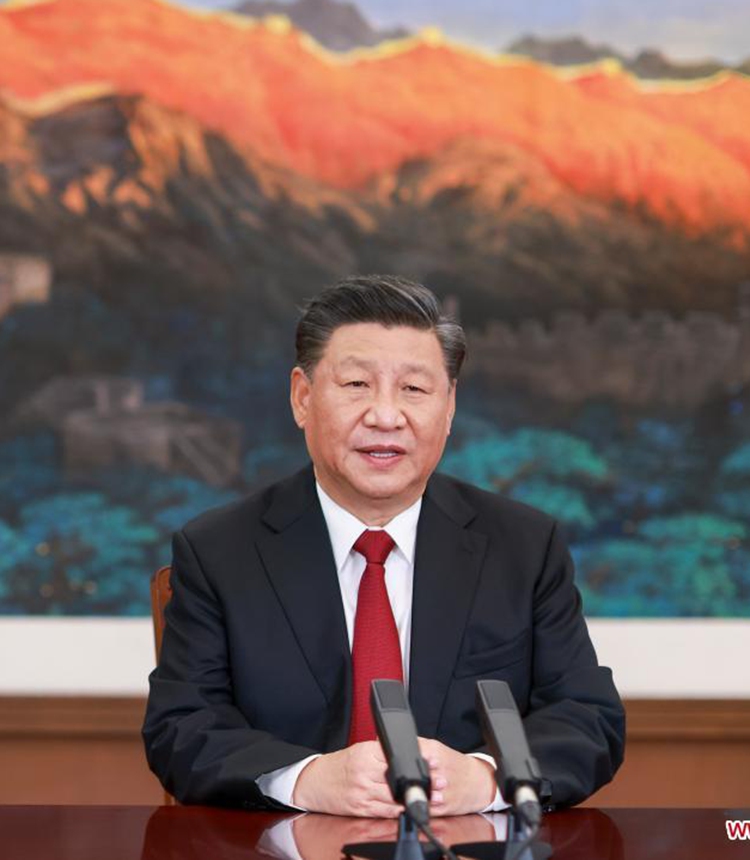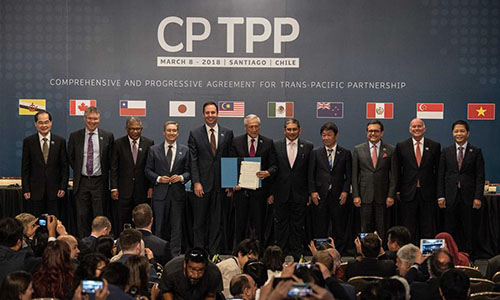China to ‘favorably consider’ joining CPTPP
Source: Global Times Published: 2020/11/21 3:16:08

Chinese President Xi Jinping delivers a keynote speech at the Asia-Pacific Economic Cooperation (APEC) CEO Dialogues via video link, in Beijing, capital of China, Nov. 19, 2020. (Xinhua/Li Xueren)
Chinese President Xi Jinping said at Friday’s APEC summit that China will “favorably consider” joining the Comprehensive and Progressive Agreement for Trans-Pacific Partnership (CPTPP), the successor to the Trans-Pacific Partnership (TPP) trade deal that the US left under the Trump administration in 2017.Speaking at the online 27th APEC Economic Leaders' Meeting on Friday, Xi said China welcomes the signing of the Regional Comprehensive Economic Partnership (RCEP) that forms the world’s largest free trade area, and will favorably consider joining the CPTPP.
Chinese analysts said joining the CPTPP could offer a huge opportunity for China's service industry, high-tech industry and digital economy.
"It could also mean an end to the suppression of Chinese companies such as Huawei and TikTok when they conduct business abroad,” Wang Huiyao, president of the Center for China and Globalization (CCG) think tank, told the Global Times on Friday night.
Xi’s comments came after the RCEP, a historic free trade agreement, was signed by 15 Asia-Pacific countries, forming the world’s largest free trade area.
Compared with the RCEP, the CPTPP pact covers a smaller population and accounts for a smaller share of global trade but it has higher standards in some aspects such as environmental protection.
The CPTPP is a free trade agreement formed after the US withdrew from the TPP. It covers 498 million people worldwide, and the total GDP of the signatory countries accounts for 13 percent of the global economy.
The TPP was considered to be one of the most important achievements of the Obama administration, but Trump abruptly withdrew from it after taking office.

Ministers from 11 countries gathered in Chile's capital to sign the Comprehensive and Progressive Agreement for Trans-Pacific Partnership (CPTPP) on March 8, 2018. (Xinhua/Jorge Villegas)
Wang explained that the CPTPP is based more on services, high technology, intellectual property rights, and industries such as the digital economy, and the statement by Chinese President Xi showed the country’s determination to further expand its opening-up, as well as its desire to join the global economy and regional economy, and promote Asia-Pacific economic integration and cooperation.China, during its economic transition and climb up the global value chain, is also eyeing significant improvement in those areas.
China holds an open and active attitude toward joining the CPTPP, Gao Feng, a spokesperson for the Ministry of Commerce, said on Thursday, reiterating calls for open, transparent and mutually beneficial regional free trade arrangements.
China welcomes any regional free trade pact that is in line with WTO rules and that is favorable for pushing economic globalization and regional economic integration, Gao told a regular media briefing in Beijing.
Still, analysts said joining the CPTPP will require lengthy and vigorous negotiations. The RCEP took eight years to reach fruition.
Posted in: ASIA-PACIFIC,CHINA FOCUS